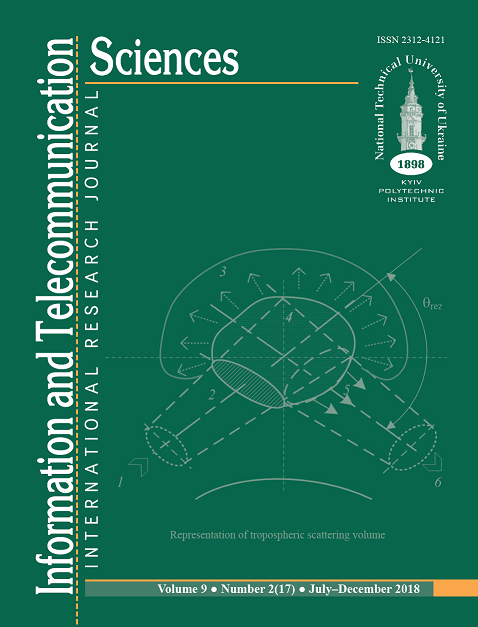THREE-TIER ARCHITECTURE FOR INTERNET OF THINGS NETWORKS
DOI:
https://doi.org/10.20535/2411-2976.22018.36-43Keywords:
Industrial Internet of Things, IIoT, IoT gateway, Three-tier architecture, Internet of Things, The way of interaction between IoT nodes.Abstract
Background. There is a large number of devices used on Industrial objects and all these devices should interact. Such usage of IoT in the corporate environment or in industrial facilities is called IIoT (Industrial IoT). According to statistical data of the information portal "Statista", there is a problem of a rapid increase in the number of devices nowadays. Therefore, it is necessary
to create networks that can withstand all connected devices. The relevance of the paper is determined by the need to connect a large number of devices in a small area in the Industrial Internet of Things.
Objective. The aim of the paper is to find the way to increase the number of IoT-devices per unit area through 3-lvl IoT architecture and the way to modify the interaction between IoT nodes.
Methods. Analysis of publications devoted to the Internet architecture. Analysis of ways to increase the number of serviced nodes per unit area. On the basis of the analysis, a modification aimed at increasing the number of served IoT-nodes is proposed.
Results. The three-level IoT architecture and an appropriate way of interaction between IoT devices are proposed. The circuit of three-tier architecture was developed and graphically displayed, the main feature of which is the existence of an additional node, which allows connecting a larger number of end devices. Algorithms and functions of the devices at all levels of three-tier architecture were described in detail. The model of the monitoring system and the advantages of its usage in the three-tier architecture are described. Also the effectiveness of the proposed method compared to the existing ones was mathematically proved.
Conclusions. The three-level architecture of the IoT network has been developed, which is characterized by the availability of an additional level of the router, which allowed concentration of the group of end nodes in the router and unload the gateway. This allowed increasing the maximum number of terminal devices.
References
Internet of Things (IoT) connected devices installed base
worldwide from 2015 to 2025 (in billions).
https://www.statista.com/statistics/471264/iot-number-ofconnected-
devices-worldwide. (access date: 01.12.2017).
What is the Industrial Internet of Things? https://www.iscoop.
eu/internet-of-things-guide/industrial-internetthings-
iiot-saving-costs-innovation/industrial-internetthings-
iiot (access date: 03.12.2017).
Rouse M. Personal area network (PAN).
http://searchmobilecomputing.techtarget.com/definition/p
ersonal-area-network (access date: 28.03.2016).
Internet of Things: Wireless Sensor Networks.
http://www.iec.ch/whitepaper/pdf/iecWPinternetofthings-
LR-en.pdf (access date: 26.11.2017).
Zhong С. Study on the IоT Architecture and Gateway
Technology. / C. Zhong, F. Univ, Z. Zhu, R. Huang //
th International Symposium on Distributed Computing
and Applications for Business Engineering and Science.
Guiyang, 2015 p. 196-199.

